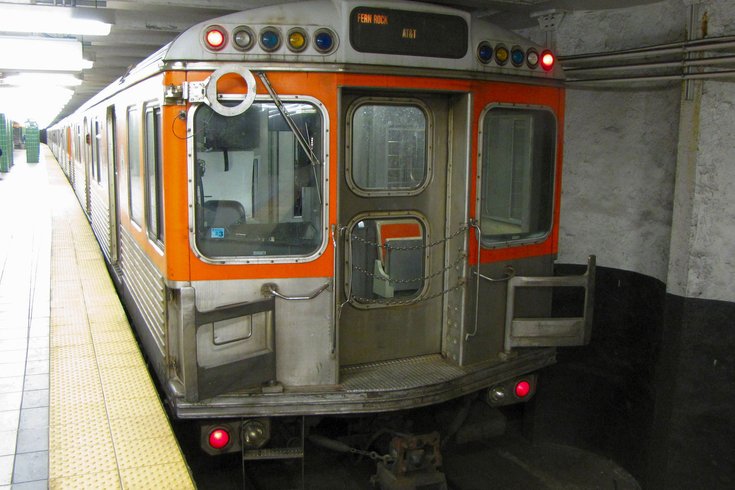
February 12, 2015
 Ben Schumin/via Wikimedia
Ben Schumin/via Wikimedia
A Broad Street subway train, at the Race-Vine station.
SEPTA will inspect its tunnel ventilation system after a Washington D.C. subway accident that killed one and injured more than 80 last month, officials said Friday.
The National Transportation Safety Board has called on the Federal Transit Administration to conduct safety inspections of all rail agencies after a subway car in the nation’s capital filled with smoke, killing one woman.
The federal board placed part of the blame for the death on faulty ventilation - a problem unlikely to face SEPTA, local officials said.
“Our system is vastly different than what DC Metro does,” said Scott Sauer, SEPTA’s chief officer of system safety.
Yet, SEPTA officials said they were going to inspect their own system.
“SEPTA is going to do its own audit,” Sauer said. “We have already started planning. We are going to go down and reassess what would happen in a smoke incident in certain locations.”
No date has been set for the inspections. Standard operating procedures will also be reviewed.
In the Washington D.C. accident, passengers saw their subway car fill with smoke as it was stuck in a dark tunnel between stations. As fumes wafted in, panic increased. Some lost consciousness. Passengers were told to get closer to the ground to avoid the smoke and one man started screaming and pounding on the doors, according to local news reports. It took more than a half hour for emergency crews to arrive at the train.
An electrical problem was blamed for the smoke but the ventilation fans meant to clear fumes operated poorly and may have actually made the situation worse. The NTSB also found that two of the four fans malfunctioned.
DC’s Metro uses fans to ventilate because it is deep underground without easy access to outside air. The tunnels are as low as 190 feet below the city’s surface, a height equivalent to about two-thirds of the U.S. Capitol Building.
SETPA’s tunnels, however, are more shallow and ventilate naturally, according to Sauer. Many sidewalk grates provide air for the subway system, according to Bob Lund, SEPTA’s assistant general manager of engineering maintenance and construction.
Sauer said there were procedures in place to deal with fires; the NTSB criticized the D.C. metro for having no written procedures on how to deal with ventilation in these types of emergencies.
Washington D.C. firefighters had not confirmed that the third rail was off before risking their safety and entering, which was against protocol, according to The Hill. There were also significant communications problems.
“We can turn the third rail off in a matter of seconds remotely,” Sauer said. Because firefighters face life-threatening situations if there is a miscue, on-site confirmation is key. To address this problem, Philadelphia purchased equipment for firefighters a few years ago that magnetically attaches to the third rail and lets officials quickly know if it is safe.
“This device will tell [firefighters] whether or not there is power,” Sauer said.
If smoke or fire in a tunnel is reported, Sauer said that an official would be dispatched to figure out the severity of the problem. If there was an issue, the third rail would be deactivated and emergency personnel would be sent to help passengers. In addition, fans could be brought down to help ventilate.
Bauer said SEPTA coordinates with the fire department for safety and drills.
“We try to give them as much information as we think they need or as much as they say they need,” he said.
Reuters contributed to this report.